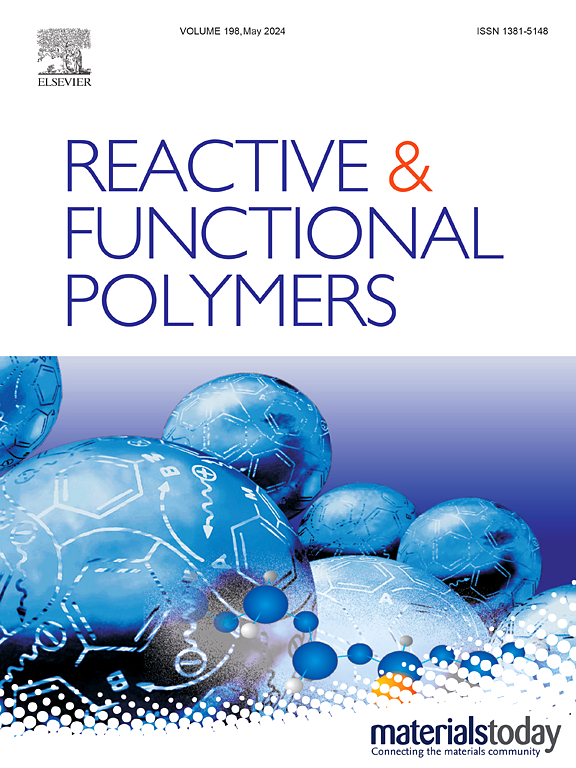Magnetic multiwalled carbon nanotube modified with a ternary formaldehyde-based polymer for dispersive solid phase extraction of parabens and phthalate esters
IF 4.5
3区 工程技术
Q1 CHEMISTRY, APPLIED
引用次数: 0
Abstract
In the current study, a novel magnetic multiwalled carbon nanotube (MMWCNT) was synthesised, coated, and modified with SiO2 and 8-hydroxyquinoline-formaldehyde-thiourea polymer. This nano sorbent was subsequently employed for dispersive micro solid-phase extraction (DμSPE) of several phthalate esters and parabens, including dimethyl phthalate (DMP), diallyl phthalate (DAP), methylparaben (MP), and butyl paraben (BP) from real samples, coupled with high-performance liquid chromatography equipped with a diode array detector (HPLC-DAD). The key innovation lies in modifying the magnetic sorbent through the combination of 8-hydroxyquinoline-formaldehyde, and thiourea, which results in improved extraction. The structure of the synthesised nanosorbent was confirmed using several physicochemical techniques, including Fourier transform infrared spectrophotometry (FT-IR), scanning electron microscopy (SEM), thermogravimetric analysis (TGA), and X-ray diffraction (XRD).
The factors influencing the efficiency of the extraction process were investigated and optimised under the optimal conditions (nanosorbent quantity, 18 mg; adsorption time, 19.0 min; sample volume, 25 mL; and eluent volume, 120 μL). For this purpose, a face-centred central composite design (FCCD) combined with response surface methodology (RSM) was applied. The other remaining factors, such as eluent type (acetonitrile), salt content (0 %), and solution pH (3.0), were optimised using a one-variable-at-a-time approach.
The proposed method demonstrated a broad linear range of 0.1–1500 μg L−1, low limits of detection (LOD) ranging from 0.03 to 0.14 μg L−1 (signal-to-noise ratio, S/N = 3), and correlation coefficients (R2) more significant than 0.9992. The method also exhibited good precision, with relative standard deviations (RSDs) below 7.4 % (n = 5), and achieved relative recoveries ranging from 90.0 % to 107 %. Finally, the successful analysis of model analytes in various water samples and a personal care product demonstrated the potential applicability of the magnetic nanosorbent in the DμSPE method.
用三元甲醛基聚合物修饰磁性多壁碳纳米管分散固相萃取对羟基苯甲酸酯和邻苯二甲酸酯
在本研究中,合成了一种新型磁性多壁碳纳米管(MMWCNT),并用SiO2和8-羟基喹啉-甲醛-硫脲聚合物包裹并修饰。随后,利用该纳米吸附剂对样品中的邻苯二甲酸酯类和对羟基苯甲酸酯类进行分散微固相萃取(DμSPE),包括邻苯二甲酸二甲酯(DMP)、邻苯二甲酸二烯丙酯(DAP)、对羟基苯甲酸甲酯(MP)和对羟基苯甲酸丁酯(BP),并辅以配备二极管阵列检测器的高效液相色谱(HPLC-DAD)。关键创新在于通过8-羟基喹啉甲醛与硫脲的结合对磁性吸附剂进行改性,提高了萃取效果。利用傅里叶变换红外分光光度法(FT-IR)、扫描电子显微镜(SEM)、热重分析(TGA)和x射线衍射(XRD)等多种物理化学技术证实了合成的纳米吸附剂的结构。在最佳条件下(纳米吸附剂用量为18 mg;吸附时间:19.0 min;样品体积:25ml;洗脱液体积为120 μL)。为此,采用面中心中心复合设计(FCCD)和响应面法(RSM)。其余因素,如洗脱液类型(乙腈)、含盐量(0%)和溶液pH(3.0),采用单变量法进行优化。该方法线性范围为0.1 ~ 1500 μ L−1,低检出限(LOD)为0.03 ~ 0.14 μ L−1(信噪比S/N = 3),相关系数R2大于0.9992。方法精密度良好,相对标准偏差(rsd)小于7.4% (n = 5),相对加样回收率为90.0% ~ 107%。最后,通过对各种水样和个人护理用品中的模型分析,证明了磁性纳米吸附剂在DμSPE方法中的潜在适用性。
本文章由计算机程序翻译,如有差异,请以英文原文为准。
求助全文
约1分钟内获得全文
求助全文
来源期刊

Reactive & Functional Polymers
工程技术-高分子科学
CiteScore
8.90
自引率
5.90%
发文量
259
审稿时长
27 days
期刊介绍:
Reactive & Functional Polymers provides a forum to disseminate original ideas, concepts and developments in the science and technology of polymers with functional groups, which impart specific chemical reactivity or physical, chemical, structural, biological, and pharmacological functionality. The scope covers organic polymers, acting for instance as reagents, catalysts, templates, ion-exchangers, selective sorbents, chelating or antimicrobial agents, drug carriers, sensors, membranes, and hydrogels. This also includes reactive cross-linkable prepolymers and high-performance thermosetting polymers, natural or degradable polymers, conducting polymers, and porous polymers.
Original research articles must contain thorough molecular and material characterization data on synthesis of the above polymers in combination with their applications. Applications include but are not limited to catalysis, water or effluent treatment, separations and recovery, electronics and information storage, energy conversion, encapsulation, or adhesion.
 求助内容:
求助内容: 应助结果提醒方式:
应助结果提醒方式:


